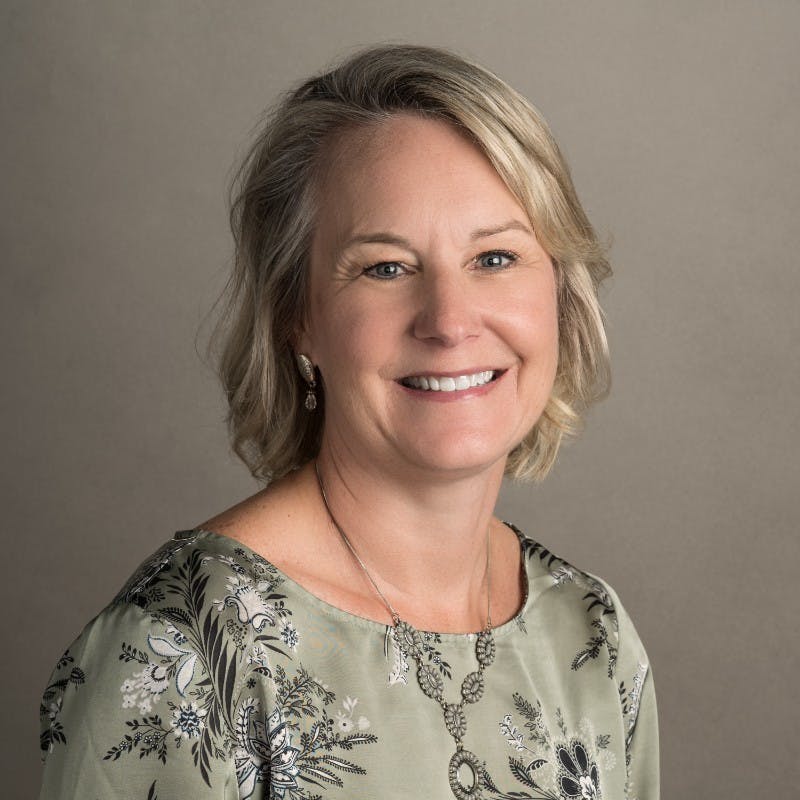
Funding for Kansas Manufacturers
If you need to expand or train your workforce, or increase your production capabilities, we break down what it takes.
SwiftOtter enables manufacturers to increase revenue and efficiencies through digital selling channels. If you don't have an eCommerce experience, let's talk as it's highly likely you are missing out on sales opportunities while falling behind your competition. Contact us to learn how this government funding can be a boost for a project like this.
The State of Kansas empowers its manufacturers with funding opportunities to spark innovation, growth, and global competitiveness. These programs, ranging from tax incentives to grants and low-interest loans, are tailored to bolster the manufacturing sector's adaptation to technological advances and market shifts, ensuring economic prosperity and job creation.
Kansas' commitment to its manufacturing community is evident through diverse support mechanisms designed to cater to businesses at all stages of growth. From startups innovating new products to established firms optimizing operations, these government-backed resources are pivotal in transforming ambitious plans into tangible successes. This strategic investment strengthens Kansas' industrial foundation and positions its manufacturers as leaders in the dynamic global economy.
Short version
- Kansas programs mostly depend on location: rural locations have a much lower threshold for qualification.
- Promoting Employment Across Kansas (PEAK): refunds payroll taxes after maintaining an expanded workforce over several years.
- Kansas Industrial Training (KIT), Kansas Industrial Retraining (KIR): provides significant incentives for training a manufacturing workforce.
- High Performance Incentive Program (HPIP): eliminates sales tax and property tax for qualifying equipment. Also provides returns up to 10% of purchases.
Free money sounds like a scam; how do I know it's not?
Unlike the Nigerian prince that promises you riches untold if you simply wire them some money, this article discusses funding from the Kansas and Federal governments—programs put together by legislators to help manufacturers succeed. There are stipulations for receiving money. And there is often a small filing fee (<$1,000).
The Kansas Economic Development is the primary distributor of these funds.
This article is the result of SwiftOtter’s research, but more importantly, the help of two industry experts:
Micki Vandeloo has thirty-five years of experience in the manufacturing space. The first twenty-five were working for manufacturers. During this time, she learned about the federal grant system. During this time, she learned that, while manufacturers could access state and federal grants, they often didn’t have the time or expertise to do so. Thus, she launched Lakeview Consulting—an organization that helps manufacturers achieve grants.

Tim Zimmerman, is a business development project manager for the Kansas Economic Development. He has over three years of experience in helping manufacturers identify Kansas-sourced funding.

Types of funding overview
We will evaluate the two sources of funding: Kansas State funding and Federal Programs.
Federal grants
Congress passes laws to appropriate funding to government programs. This money flows down to states, grants, and other funding venues. We will discuss grants and the currently-unfunded TAAF.
Kansas state funding
Some of Kansas' funds come from federal sources. However, some states do kick in additional funds to incentivize manufacturers.

Kansas Funding
Here is what is available directly from the state of Kansas.
Kansas offers four programs that provide funding or reimbursements for expansion in either workforce or equipment. One unique aspect of Kansas's funding is that it applies to manufacturers, distributors, and warehouse entities.
While all manufacturers can access these funds, ease of access is heavily weighted toward manufacturers in rural counties. In other words, if you are in Shawnee, Douglas, Wyandotte, Johnson, Leavenworth or Sedgwick counties, you must have a significantly larger expansion.
Promoting Employment Across Kansas (PEAK)
If you are ready to expand your workforce, apply for PEAK. This program incentivizes growing and retaining your workforce and is slanted in favor of rural manufacturers.
After hiring five (less populated counties) or ten (more populated counties) people, your company will be refunded up to 95% of their payroll witholding taxes for five to ten years for these new hires.
What’s the catch?
If the number of employees falls below the agreed-upon increase, the withholding savings must be returned to the state.
To qualify for PEAK, you will need to fit within specific NAICS codes, must be up to date on your taxes, and not within a bankruptcy filing.
Several other requirements should be easy with which to comply:
- You must provide full-time employees adequate health insurance within six months of hiring. This must include hospital care, physician care, mental health care, substance abuse treatment, prenatal and postnatal care and prescription drugs.
- You must pay at least 50% of the healthcare premium.
- Your median wage at least matches the county’s median wage.
When you meet this criteria, you then have to take some action:
- Hire five (rural counties) or ten (populated counties) people within two years. You don’t have to retain these exact people, but your head count must be at least five or ten additional at the end of these two years.
- Pay a $750 application fee for each application.
- Allow Kansas to audit your records.
- Once the Secretary of Commerce approves you, you can keep or be refunded 95% of payroll withholding taxes.
How long do we get to claim the reduced payroll withholdings?
- For the five or ten job minimum application: 5 years if 100% of county median wage, 6 years if 110% of county median wage, 7 years if 120% of county median wage.
- For the high-impact term, you must create at least one hundred jobs: 7 years if 100% of county median wage, 8 years if 110% of county median wage, 9 years if 120% of county median wage and 10 years if 140% of county median wage.
Resources
Kansas Industrial Training (KIT), Kansas Industrial Retraining (KIR)
Training is a critical differentiator for manufacturers. The new generation of the workforce wants investment to make them better. They are hungry to learn and do better. However, this costs money, and money is not always in plentiful demand.
If you would like to increase the skills of your manufacturing workforce, these programs are for you.
KIT and KIR covers instructors, curriculum, textbooks, training equipment and travel.
What’s the difference between KIT and KIR?
- KIT is designed to grow a workforce by training new employees. This is a follow-on to the PEAK program. If you qualify for PEAK, you also qualify for KIT. These programs work hand-in-hand, training users on newly installed equipment.
- KIR uplevels existing employees' capabilities. If you are deploying a new machine on the production floor, KIR helps defray employee training costs.
What do these programs offer?
- Typically $1,200 and $2,000 per trainee (incredible!)
- This amount covers airfare, lodging, transportation, and meal allowances up to 50% of award amount.
- This can also include the material used for training (steel plates for welding, for example).
What is required from us?
- KIR requires dollar-for-dollar matching, KIT does not.
- You must be a manufacturer, distributor or in a similar industry.
- You must provide full-time employees adequate health insurance within six months of hiring. This must include hospital care, physician care, mental health care, substance abuse treatment, prenatal and postnatal care and prescription drugs.
- You must pay a starting average wage that’s at least the median wage for the county.
- You must pay a $500 application fee.
The application process is straightforward and fairly easy to complete.
High Performance Incentive Program (HPIP)
Expanding the production floor is expensive. This program aims to defray these costs through several mechanisms, creating a highly attractive program.
HPIP provides income tax credits, a sales tax exemption and training for capital expenditures.
If you’re ready to add new equipment, HPIP adds a new layer of incentive, including no sales tax on these purchases. This represents significant savings.
How do I qualify for HPIP?
- You must be a for-profit company subject to Kansas state taxes.
- You must pay above-average wages. This is based on your NAICS code and location.
- You must be a manufacturer. (other NAICS codes may apply, but they must meet additional criteria)
What does HPIP offer to manufacturers?
- No sales tax on all material for the project. This benefit starts at $1 investment and is separate from the investment minimum in the next point.
- 10% of investments over $50,000 or $1,000,000 (in the metro counties) back through state tax credits. Half of these credits can be sold on the open market. This can offset taxes for up to sixteen years.
- No property tax on the equipment.
This incentive alone can represent savings in the many thousands of dollars.
What is the process to apply for HPIP?
- Before signing a contract with contractors, write up a project description and fill out the application. Send to Kansas Department of Commerce. You cannot backdate these applications, so it’s critical that this paperwork is completed beforehand.
- Kansas will determine if you meet the requirements, determine the certification period, and will return an approval status.
- Once approved, you claim a sales tax extension. If you made purchases after you submitted your application but before you were approved, you can request a sales tax refund.
What types of capital investment does this cover?
- Building expansion
- New equipment
- Software
- Efficiency updates, like forklifts, pallet wrappers, etc.

Federal funding sources
Here is what is available directly from the US federal government.
The federal government provides opportunities for funding, but these are more targeted at priorities established by the current administration. For example, as of this writing in 2024, priorities are semiconductors, batteries, EV, battery recycling and carbon capture. Additionally, funds are also prioritized for rural communities.
Overall, applying for these grants is an arduous process. It’s not likely that you will be able to walk through the process by yourself. That’s where experts like Micki at Lake View Consulting come into focus. They have established a federal grant database that identifies opportunities and a proactive watchdog-like system to match grants with business opportunities.
Here are a few of the more universally-available grants.
USDA grants
These monies are funneled to rural communities with “small” companies (< 500 people). The community receives the funds (like an electric company) and then distributes to customers.
TAAF (Trade Adjustment Assistance for Firms)
Note that this program is currently unfunded.
This is a money-matching program that flows through universities to support business expansion. This is for companies that have are disadvantaged thanks to foreign competition. This covers marketing, equipment, websites, etc. This can also be combined with other programs.
How the funds are distributed varies, but they typically cover 50% of costs up to a project total of $150,000 ($75,000 dispersed).
Mid-America TAAC MU Extension
4200 Little Blue Parkway, Suite 590
Independence, MO 64057
Toll Free: (816) 666-9407
Email: [email protected]
Grants
If you are willing to go down the grants road, be prepared to spend money to make money. These aren’t “free” in that there is an application process and a signoff process, to ensure money is well spent.
Grants.gov is the federal repository of available grants. However, this doesn’t also review state-specific grants. Lake View Consulting has an inexpensive service that aggregates all available services. They can also help you prepare for and apply to these grant programs.
Before you can even apply for a grant, you must have a SAM (System for Awards Management) number. This is a 6-week, complicated process.
Additional Resources
- We are KMS, your local Manufacturing Extension Partner. It's hard to overstate the value these people bring to manufacturers in Kansas.
- Kansas Department of Commerce
- Kansas City Manufacturing Network
Contact us
We equip manufacturers to sell their products online: either directly to business buyers or to consumers. If you are interested in how you can utilize these funds to help offset a digital transformation, let's chat!